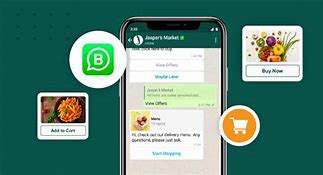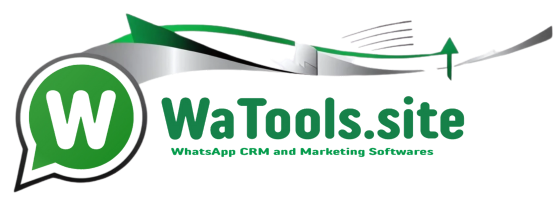In today's digital marketing landscape, direct messaging has emerged as one of the most effective channels for businesses to connect with customers. WhatsApp, with its 2.5+ billion active users worldwide, offers unprecedented reach and engagement potential for businesses of all sizes. Among the various WhatsApp business features, bulk messaging stands out as a particularly powerful tool for marketing, customer service, and operational communications.
WhatsApp bulk messaging allows businesses to send personalized messages to multiple recipients simultaneously, enabling efficient communication at scale while maintaining the personal touch that makes WhatsApp so effective. When implemented correctly, WhatsApp bulk messaging can significantly enhance customer engagement, boost conversion rates, and streamline business operations.
In this comprehensive guide, we'll explore everything you need to know about WhatsApp bulk messaging for business, including best practices, compliance requirements, implementation strategies, and how to leverage WATools' free WhatsApp sender to maximize your messaging effectiveness.
Understanding WhatsApp Bulk Messaging: Types and Applications
Before diving into implementation strategies, it's important to understand the different types of WhatsApp bulk messaging and their various business applications.
Types of WhatsApp Bulk Messages
1. Transactional Messages
These are service-related notifications sent to customers regarding their specific interactions with your business. Examples include:
- Order confirmations and shipping updates
- Appointment reminders and booking confirmations
- Payment receipts and invoice notifications
- Account activity alerts and security notifications
2. Marketing Messages
These are promotional communications aimed at driving customer engagement and sales. Examples include:
- New product announcements and launches
- Special offers, discounts, and promotions
- Event invitations and webinar registrations
- Loyalty program updates and rewards
3. Customer Service Messages
These messages focus on providing support and assistance to customers. Examples include:
- Responses to common customer inquiries
- Troubleshooting guides and support resources
- Feedback requests and satisfaction surveys
- Account updates and service notifications
4. Operational Messages
These are internal communications sent to employees or business partners. Examples include:
- Team announcements and updates
- Shift schedules and operational changes
- Emergency notifications and alerts
- Training materials and resources
Business Applications of WhatsApp Bulk Messaging
WhatsApp bulk messaging can be applied across various business functions to enhance efficiency and effectiveness:
Marketing and Sales
- Lead nurturing and conversion campaigns
- Product launches and promotional announcements
- Abandoned cart recovery messages
- Upselling and cross-selling opportunities
- Event marketing and registration reminders
Customer Service
- Proactive support notifications
- FAQ distribution and self-service resources
- Customer onboarding and education
- Service disruption alerts and updates
- Customer feedback collection
Operations
- Appointment scheduling and reminders
- Order processing and fulfillment updates
- Inventory notifications and stock alerts
- Service delivery coordination
- Team communication and coordination
Customer Retention
- Loyalty program communications
- Re-engagement campaigns for inactive customers
- Personalized offers based on purchase history
- Anniversary and birthday messages
- Exclusive content and early access opportunities
WhatsApp Bulk Messaging Compliance and Best Practices
While WhatsApp bulk messaging offers tremendous potential for businesses, it's essential to adhere to WhatsApp's policies and industry best practices to ensure effectiveness and avoid potential account restrictions.
WhatsApp Business Policy Compliance
WhatsApp has specific policies governing business messaging to protect users from spam and ensure a positive experience. Key compliance requirements include:
1. Opt-In Requirement
You must obtain explicit consent from recipients before sending them WhatsApp messages. This opt-in should be clear, specific to WhatsApp communications, and properly documented.
2. Message Quality Guidelines
WhatsApp requires business messages to be relevant, expected, and valuable to recipients. Messages should not contain misleading or deceptive content, and should comply with all applicable laws and regulations.
3. Opt-Out Management
You must honor opt-out requests promptly and provide a clear way for recipients to unsubscribe from your messages. This can be as simple as instructing them to reply "STOP" or "UNSUBSCRIBE".
4. Messaging Limits
WhatsApp imposes limits on the number of messages businesses can send to prevent spam. These limits vary based on your WhatsApp Business account type and quality rating.
5. Content Restrictions
Certain content types are prohibited on WhatsApp, including:
- Illegal products or services
- Adult content or sexually suggestive material
- Hate speech or discriminatory content
- Weapons, ammunition, or explosives
- Gambling-related content in certain jurisdictions
- Healthcare products making unrealistic claims
Bulk Messaging Best Practices
Beyond compliance requirements, following these best practices will help maximize the effectiveness of your WhatsApp bulk messaging campaigns:
1. Segmentation and Targeting
Segment your audience based on relevant criteria (demographics, purchase history, engagement level, etc.) and tailor your messages to each segment. This targeted approach significantly improves engagement and conversion rates compared to generic mass messaging.
2. Personalization
Leverage customer data to personalize your messages with recipients' names, relevant product recommendations, or references to their previous interactions with your business. Personalized messages typically generate 6x higher transaction rates than generic ones.
3. Timing Optimization
Send messages at times when recipients are most likely to be receptive and available to engage. This varies by audience segment and message type, so testing different send times can help identify optimal scheduling.
4. Message Frequency
Avoid overwhelming recipients with too many messages. Establish a reasonable frequency based on your relationship with customers and the value of your communications. For most businesses, 2-4 marketing messages per month is a good starting point.
5. Clear Call-to-Action
Include a clear, compelling call-to-action in your messages to guide recipients on the next steps. Whether it's making a purchase, booking an appointment, or visiting your website, the desired action should be obvious and easy to take.
6. Multimedia Enhancement
Incorporate relevant images, videos, or documents to enhance your messages when appropriate. Visual content can significantly increase engagement and comprehension, but should be used purposefully rather than gratuitously.
7. Two-Way Communication
Encourage and be prepared for responses to your bulk messages. The interactive nature of WhatsApp is one of its greatest strengths, so ensure you have resources in place to engage with customers who reply to your messages.
8. Performance Tracking
Monitor key metrics such as delivery rates, open rates, response rates, and conversion rates to evaluate the effectiveness of your campaigns and identify opportunities for improvement.
| Metric | Description | Benchmark |
|---|---|---|
| Delivery Rate | Percentage of messages successfully delivered to recipients | 95-98% |
| Open Rate | Percentage of delivered messages that are opened by recipients | 80-95% |
| Response Rate | Percentage of recipients who respond to your message | 15-35% |
| Click-Through Rate | Percentage of recipients who click on links in your message | 20-40% |
| Conversion Rate | Percentage of recipients who complete the desired action | 3-15% |
How to Implement WhatsApp Bulk Messaging with WATools
WATools offers a free WhatsApp sender tool that allows businesses to implement bulk messaging campaigns effectively. Here's a step-by-step guide to getting started:
1. Prepare Your Contact List
Create a clean, organized list of contacts who have explicitly opted in to receive WhatsApp communications from your business. Ensure all numbers are in the correct international format (e.g., +1XXXXXXXXXX for US numbers) and are active WhatsApp users.
2. Segment Your Audience
Divide your contact list into relevant segments based on criteria such as:
- Customer type (new, existing, inactive)
- Purchase history and preferences
- Demographic information
- Engagement level with previous communications
- Geographic location
3. Craft Your Message Templates
Develop message templates for each segment that are personalized, concise, and include a clear call-to-action. Consider creating variations to test different approaches.
Effective message templates typically include:
- A personalized greeting
- Clear, valuable content
- A specific call-to-action
- Opt-out instructions
4. Access the WATools WhatsApp Sender
Visit the WATools WhatsApp Sender to get started. Our tool is completely free and designed to help businesses implement effective bulk messaging campaigns.
5. Upload Your Contact List
Upload your segmented contact list to the WATools platform. The tool supports various file formats, including CSV and Excel spreadsheets.
6. Customize Your Messages
Input your message template and customize it with personalization variables that will be automatically filled with recipient-specific information.
7. Schedule Your Campaign
Set the optimal timing for your campaign based on your audience's preferences and availability. You can schedule messages to be sent immediately or at a specific future date and time.
8. Test Before Sending
Send test messages to a small sample of contacts to verify that everything works correctly, including personalization variables and any included links or media.
9. Launch Your Campaign
Once you've confirmed that everything is working correctly, launch your campaign to send messages to your full contact list or selected segments.
10. Monitor and Analyze Results
Track the performance of your campaign using WATools' analytics features. Monitor key metrics such as delivery rates, response rates, and conversion rates to evaluate effectiveness.
Advanced WhatsApp Bulk Messaging Strategies
Once you've mastered the basics of WhatsApp bulk messaging, consider implementing these advanced strategies to further enhance your results:
1. Drip Campaigns
Create a series of sequential messages delivered over time to nurture leads or onboard new customers. Each message in the sequence should build on the previous one and guide recipients toward a specific goal.
2. Triggered Messages
Set up automated messages triggered by specific customer actions or events, such as:
- Abandoned cart reminders
- Purchase follow-ups and cross-sell opportunities
- Re-engagement messages for inactive customers
- Milestone celebrations (anniversaries, birthdays, etc.)
3. A/B Testing
Test different message variations with small segments of your audience to identify the most effective approaches before scaling to your full contact list. Elements to test include:
- Message content and tone
- Call-to-action phrasing and placement
- Media inclusion (images, videos, etc.)
- Send times and days
4. Interactive Messages
Leverage WhatsApp's interactive features to increase engagement, such as:
- Quick reply buttons for simple responses
- List messages for presenting multiple options
- Call-to-action buttons that open websites or initiate calls
- Location sharing for geographically relevant services
5. Integration with Other Channels
Coordinate your WhatsApp bulk messaging with other marketing channels for a cohesive, multi-channel approach. For example:
- Follow up email campaigns with WhatsApp messages for higher engagement
- Send WhatsApp reminders about upcoming webinars or events promoted via other channels
- Use WhatsApp to deliver personalized content related to recent website interactions
6. Conversational Commerce
Enable customers to browse products, make purchases, and complete transactions directly within WhatsApp conversations. This streamlined approach can significantly increase conversion rates by reducing friction in the buying process.

Ready to Implement WhatsApp Bulk Messaging for Your Business?
Try WATools' free WhatsApp sender to start sending effective bulk messages to your customers. Boost engagement and drive conversions today!
Try WhatsApp Sender NowCase Studies: Successful WhatsApp Bulk Messaging Implementations
E-commerce Retailer: Abandoned Cart Recovery
An online fashion retailer implemented a WhatsApp bulk messaging campaign targeting customers who abandoned their shopping carts. They sent personalized messages reminding customers of the items left in their carts, along with a limited-time discount code to incentivize completion of the purchase.
Results:
- 98% message delivery rate
- 92% open rate
- 35% conversion rate (completed purchases)
- 43% increase in average order value compared to email recovery campaigns
Service Business: Appointment Reminders
A dental clinic implemented WhatsApp bulk messaging for appointment reminders and confirmations. They sent personalized messages 48 hours before scheduled appointments, allowing patients to confirm, reschedule, or ask questions directly through WhatsApp.
Results:
- 75% reduction in no-show appointments
- 68% of rescheduling requests handled automatically through WhatsApp
- 42% increase in last-minute appointment filling
- 89% positive feedback from patients about the reminder system
B2B Company: Lead Nurturing
A software company implemented a WhatsApp drip campaign for nurturing leads generated through their website. They sent a series of educational messages about their product, including case studies, feature highlights, and personalized offers based on the lead's expressed interests.
Results:
- 3.2x higher engagement compared to email nurturing
- 28% conversion rate from lead to demo request
- 41% reduction in sales cycle length
- 52% increase in qualified sales opportunities
Conclusion: Transform Your Business Communication with WhatsApp Bulk Messaging
WhatsApp bulk messaging represents a powerful opportunity for businesses to connect with customers in a direct, personal, and highly effective way. With open rates far exceeding email and other digital channels, WhatsApp offers unparalleled potential for engagement and conversion.
By following the best practices and implementation strategies outlined in this guide, and leveraging WATools' free WhatsApp sender, businesses of all sizes can harness the power of WhatsApp bulk messaging to enhance customer communication, streamline operations, and drive growth.
Remember that the most successful WhatsApp bulk messaging campaigns are those that provide genuine value to recipients while respecting their privacy and preferences. Focus on creating relevant, personalized, and timely communications that enhance the customer experience, and you'll see significant returns on your WhatsApp messaging investment.
Start implementing WhatsApp bulk messaging in your business today and experience the transformative impact it can have on your customer engagement and business results.


